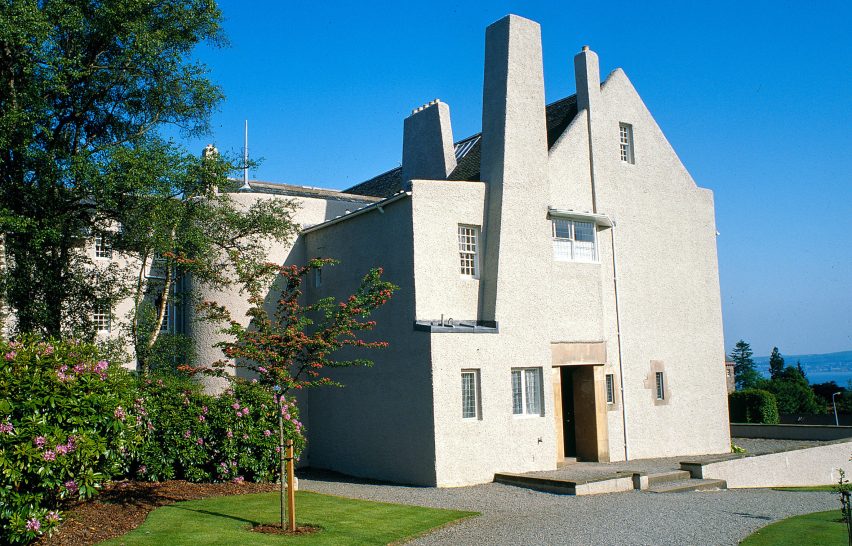To mark 150 years since the birth of Charles Rennie Mackintosh, we're looking back at five influential projects that defined his career. First up is Hill House in Helensburgh, widely recognised as the Scottish architect's most important residential work.
Completed in 1904 Hill House exemplifies Mackintosh's approach to combining traditional Scottish values with modern international ideas.
Located in Helensburgh, around 40 kilometres northwest of Glasgow, the project was commissioned by publisher Walter Blackie.
Mackintosh believed that to design a home properly he had to understand the needs of its occupants, so he spent a great deal of time with the Blackie family during the project's initial stage to ensure his proposal suited their lifestyle.
Walter Blackie himself said: "Not until we had decided on these inside arrangements did he submit drawings of the elevations."
The building displays typical Mackintosh influences, with a robust exterior referencing Scottish vernacular architecture, contrasting with a highly ornamental interior, featuring oriental themes alongside art-nouveau and art-deco details.
Mackintosh collaborated with his wife, the artist Margaret MacDonald, to create almost every element of the house, from the architecture to the furniture, fireplaces, lighting and textiles.
Blackie could not afford to complete the interior entirely according to Mackintosh's designs, so the architect focused on the principal spaces of the hallway, library, master bedroom and drawing room.
The hall and library are typically masculine spaces, defined by the use of strong, geometric lines and dark wood. The timber panelling is embellished with pieces of coloured glass and stencilled organic motifs.
In contrast, the drawing room and master bedroom are examples of the white rooms that Mackintosh became renowned for. These stark, bright and spacious rooms made the most of the available natural light and were extremely novel at the time.
The feminine and delicate design of the bedroom features walls painted ivory white, which were hung with embroidered panels of dreaming women.
Several iconic decorative motifs now synonymous with Mackintosh are found throughout the interior, including chequered forms often resulting from intersecting vertical and horizontal wooden elements.
The gridded motif recurs in furniture including a cube-shaped table designed for the drawing room, and the iconic ladderback chairs that create a bold contrast against the pale walls of the bedroom.
Mackintosh contrasted the geometric shapes with organic decorations, including a stylised rose that was stencilled onto walls and fabrics.
The rose motif was echoed in embroidered upholstery and a gesso panel that Margaret created to hang above the fireplace in the drawing room.
Mackintosh was still a partner at the firm of Honeyman, Keppie & Mackintosh, and was in the process of overseeing the first phase of construction on the Glasgow School of Art, when he first started to receive commissions for private houses.
His first completed residential project was Windyhill, a house designed for businessman and art collector William Davidson, in the village of Kilmacolm.
Hill House was the second but has become the better known. It is judged by critics as being the finest expression of his residential architecture.
Despite the critical acclaim both received, they were the only private homes Mackintosh designed from scratch in his entire career. Many prospective clients were put off by his radical approach and by his reputation for demanding complete control of his projects.
Hill House has been in the care of the National Trust for Scotland since the 1980s. Last year the organisation, revealed plans to undertake a restoration prompted by the discovery that the building's Portland cement render has been compromised by decades of exposure to westerly winds and rain.
London architecture studio Carmody Groarke has designed an enormous see-through enclosure to protect the building during the renovations. An urgent fundraising appeal was launched in February 2018 to try to secure the funds required to construct it.
Photography courtesy of Glasgow Mackintosh group, apart from where otherwise stated.

